New to the world of CBD? Eager to get started making this cannabinoid part of your daily regimen? Well, if there’s one thing that we can tell you, it’s that the CBD market of today is highly diverse and extensive. Now, this is a good thing, because it means that there’s tons of variety, ensuring that you can find the perfect product for your highly specific needs. But it also means that newbies can feel overwhelmed due to the large amount of terminology that must be learned in order to know what you’re buying.
The Major Words on the CBD Streets
We’ve made a list of all of the important CBD-related terms that you must learn in order to pick out the perfect products for your needs. By learning these terms, you’ll have no trouble finetuning your hemp experience for the best possible results.
- Hemp: A member of the cannabis family, and it is cousins with marijuana – yes, the federally illegal, psychoactive plant that makes people feel high. Hemp is unique in that it’s low in THC, so it doesn’t get a person high. Hemp is also a highly useful plant that can be turned into rope, paper, clothing and so much more. But, today, we’re talking about hemp because it’s the plant from which CBD is derived. Hemp is naturally high in CBD, and so it’s used to produce commercial CBD products.
- Cannabinoid: Hemp contains many cannabinoids, which are plant compounds native to cannabis. Cannabinoids are unique in that they work directly with our body’s endocannabinoid system which is in charge of homeostasis. Therefore, consuming cannabinoids gives the endocannabinoid system what it needs to ensure that every bodily system is functioning properly.
- CBD: One of the cannabinoids native to hemp, and it’s the one that’s most abundant in hemp. CBD has been widely studied for its many potential benefits and therapeutic properties, and it’s become an entire industry.
- THC: Another cannabinoid that’s found in both hemp and marijuana. In marijuana, THC is very abundant. However, hemp only contains about 0.3 percent THC. This is not nearly a high enough amount to deliver psychoactive effects. This is why hemp will never get a user high.
- Terpene: Terpenes are another class of compounds found in the hemp plant, as well as every other plant in existence. Terpenes determine the color, flavor and aroma of a plant. They also have unique properties within themselves, such as anti-inflammatory properties and anti-anxiety properties.
- Strain: Different hemp plants belong to different strains, and a strain refers to the unique chemical composition of a particular plant. Some strains, for instance, have higher levels of limonene, a terpene known to potentially relieve pain, and higher levels of CBN, a cannabinoid known to potentially promote sleep. Meanwhile, other strains may have higher levels of other compounds.
- Indica: Strains are categorized into three classes, with Indica being one of them. Indica strains are associated with sleepiness and calmness and may relieve pain.
- Sativa: These strains are known to be more energizing and cerebral.
- Hybrid: Halfway between Indica and sativa strains and may provide benefits associated with both.
- Full Spectrum: There are three types of hemp extracts, which refer to the way in which the hemp compounds were extracted from the plant material. Full spectrum extract contains every compound, including THC, CBD and terpenes. Bear in mind that in full spectrum extract, there is only about 0.3 percent, below the legal limit, and not enough to make a person feel high. It’s believed that full spectrum extract provides the entourage effect, an effect in which the plant compounds multiply each other’s effectiveness when taken “as nature intended.
- Broad Spectrum: contains every plant compound except for THC.
- CBD Isolate: Contains only CBD and no other compounds.
- Strength: Refers to the number of milligrams of CBD in a particular product. It determines how much CBD the user will be consuming per dose.
- Dosage Level: Quantity of the CBD product that can be taken orally.
- Tincture: An oral product that is poured beneath the tongue and absorbed through the sublingual tissue in order to act fairly quickly.
- Vape Oil: Another term for a CBD-infused e-liquid. It can be flavored or unflavored and is placed into a cartridge and vaped using a compatible device.
- Edibles: Any CBD-infused edible product, such as a gummy, that is consumed via the digestive tract.
- Topicals: Creams, lotions, balms, etc. that can be applied to the skin
Learning is CBD Power
As you can see, the CBD market doesn’t need to be that intimidating after all. By simply knowing the right terms, you can find the right products and have a very positive CBD experience. Study this guide so that you can know exactly what to buy when you’re ready to go shopping for CBD products at Hemp CBD Oil Store.
